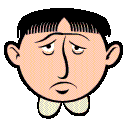Descriptive Writing Styles
In this lesson we will look at the various descriptive techniques or styles to use when writing descriptively. Having a particular style of writing can make your work more interesting to your reader, and will not make your writing sound monotonous and too simplistic. Using a writing style is like dressing up to go out; you want to look special and people will take note of you when you do. LOL.
Three writing styles of techniques will be introduced. After this lesson, we will begin to practice composing pieces of description. Then you will see how the descriptive skills that I have examined (naming, creating imagery with sensory details, using comparisons), will fit in with this lesson; descriptive writing styles.
The three writing techniques to be examined are: factual, embellished and philosophical description.
Factual Description
Gives specific details that are objective and precise, that are considered plain facts/known truths about an event, place, person, thing, or experience. There is no emotion involved or any evocative words.. This type of writing is often used to write biographies, text books, reports, observations, experimental documentation or for any purpose that requires factual information.
For example,
Mr. Joe Myrie was sixty-seven when he died on June 9, 2003. He was residing at fifteen Scorpio Lane, in Pinewest County, when he passed. The house is about forty years old, and is painted white, with cream coloured steps and Spanish-brown doors. It is not occupied at present, however, Mr. Myrie’s only daughter, Julian, will inherit the property, according to the will he left behind.
Embellished Descriptions
This type of writing style includes subjective/personal or opinionated details that are related to what is being described. It can include facts, but can also purely represent the writer’s feelings or the thoughts of the subject matter – if the subject of the description is a person.
For example,
Mr. Joe Myrie was not my favourite neighbour, but I did miss him when he died. He was my neighbour for seventeen years. He was quite a miserable little fellow, even though he seemed educated and fortunate financially. I often wondered how his seemingly pleasant and cheerful wife could stand his contentious nature.
Philosophical Description
As the name suggests, this type of description entails brooding on concepts/ideas that question things we believe about life, people, relationships and the reasons for their existence or absence. It often begins with an observation of an event, scene or any kind of sensual experience and then it is internalized and the writer or voice in the description realizes something and begins to wonder.
For example,
Mr. Myrie’s countenance often upsets me. It was quite the task to tolerate him for even a few minutes; the man seemed to lack a joy for life. I thought education and his wealth would have been a comfort to him, plus he had a very pleasant wife. What could possibly have caused such an educated and accomplished man to become so disagreeable, a perfect grouch? Wasn’t he happy? What makes someone happy anyway? What else does one need in life other than physical comfort to make them happy? Will I end up like the poor dead fellow? I guess I will have to wait and see, if I ever get that old.
If you decide to write a piece of description, it’s always good to plan. That is the subject of the next lesson: planning for writing. You can use one style or many, depending on what your intention is. A balanced blend of all three styles is always best. We will begin to practice writing descriptively in the nxt lesson.
Cheers to writing!



Comments
Post a Comment